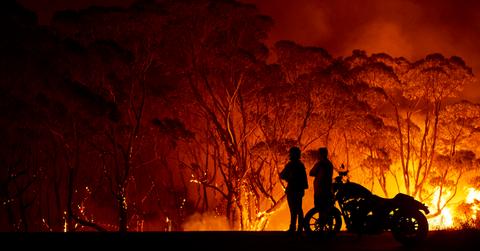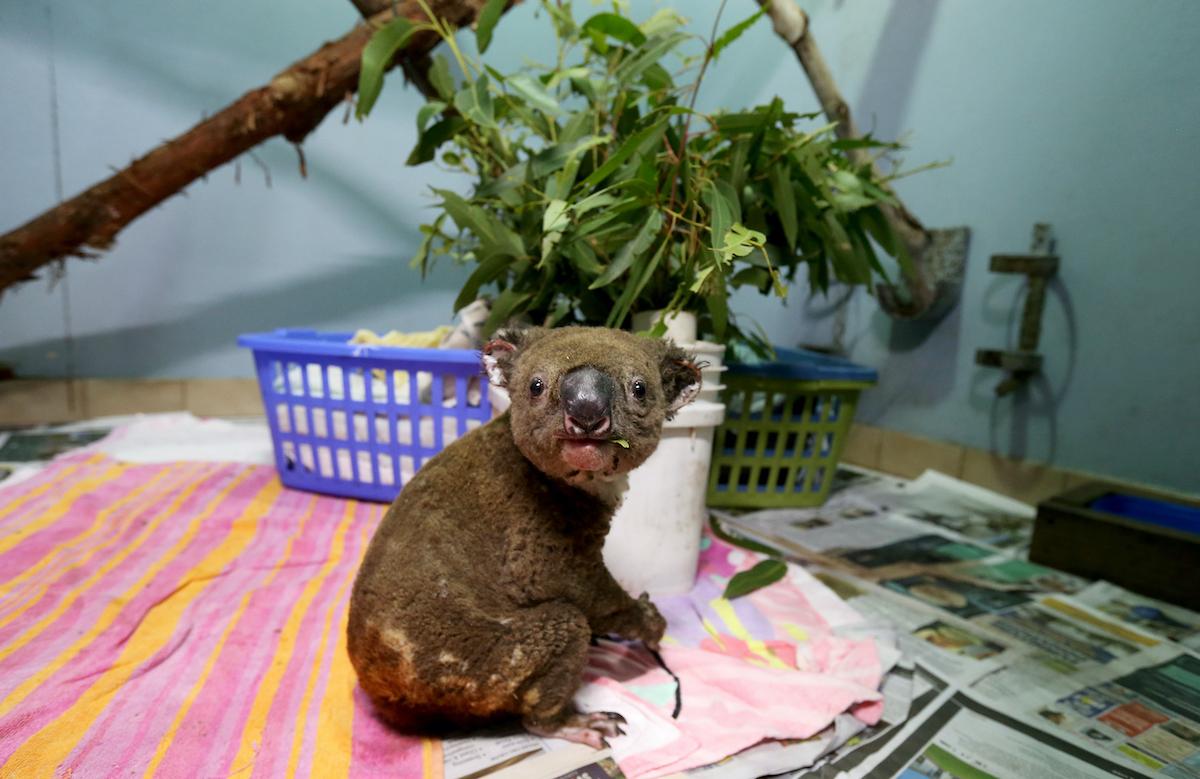Australian Bushfires Killed Almost 3 Billion Animals, New Report Finds
Australia's bushfires burned through the paths of nearly 3 billion animals, according to new findings.
Updated July 28 2020, 12:34 p.m. ET

When bushfires blazed through Australia last year, people around the world were shocked to hear scientists estimate that the Australian fires killed more than 1 billion animals. But now, a new report has found that the fires more likely killed nearly 3 billion animals and destroyed 11.46 million hectares of land.
Australia’s bushfires killed nearly 3 billion animals.

The revelation comes from a report called Australia’s 2019-2020 Bushfires: The Wildlife Toll, released this week and commissioned by the World Wide Fund (WWF) for Nature. According to the report, the wildfires blazed through the habitats of an estimated 143 million mammals, 2.46 billion reptiles, 180 million birds, and 51 million frogs.
The team behind the research was composed of 10 scientists, hailing from the University of Sydney, University of New South Wales, University of Newcastle, Charles Sturt University, and BirdLife Australia. The University of Sydney’s Dr. Lily Van Eeden led the research, and the school’s Professor Chris Dickman oversaw the project; Dickman was the same ecologist responsible for the initial estimate of the wildfires killing more than 1 billion animals (though that only actually applied to only two states: New South Wales and Victoria).
To clarify these estimates, the 3 billion specifically refers to animals that were likely in the path of fire, not those who necessarily perished — however, Dickman says the chances of any animals safely fleeing the flames is low, due to a combination of habitat loss, lack of food, and lack of shelter.
The Australia bushfires were “one of the worst wildlife disasters in modern history.”
“When you think about nearly 3 billion native animals being in the path of the fires it is absolutely huge, it’s a difficult number to comprehend,” Dickman said in a statement for the WWF.
“The interim findings are shocking. It’s hard to think of another event anywhere in the world in living memory that has killed or displaced that many animals,” added WWF-Australia CEO Dermot O’Gorman. “This ranks as one of the worst wildlife disasters in modern history.”
How can we prevent more wildfires in Australia?
As O’Gorman mentions in the report’s foreword, the Australian government recently released an interim review of the Environment Protection and Biodiversity Conservation (EPBC) Act, which is the country’s primary environmental law. “Following such a heavy toll on Australia’s wildlife, strengthening this law has never been more important,” according to O’Gorman.
In addition to protecting the EPBC, mitigating the climate crisis is key in preventing future disasters like wildfires, since various elements connected to the climate crisis (such as rising temperatures, droughts, and deforestation) are what led to these devastating wildfires in the first place.
“How quickly can we decarbonise? How quickly can we stop our manic land clearing? We land clear at a rate that’s one of the highest in the world,” Professor Dickman said in a statement. 24 people were charged with arson in the wake of the Australian fires earlier this year, as Newsweek reported at the time. Farmers often set forests on fire so they can develop the land; typically, this is done to make room to raise cows for meat and dairy, to grow crops to feed livestock, and to grow trees for logging, marijuana, and more.
Additionally, those behind the report are hopeful that it will serve as a roadmap for other countries who are vulnerable to destructive fires (such as Brazil, where the Amazon rainforest fires are on course to repeat last year’s).
“We believe a continent-wide assessment of the number of animals that might be impacted has never been done in Australia before or anywhere else in the world,” Dr Van Eeden said in a statement. “Other nations can build upon this research to improve understanding of bushfire impacts everywhere.”